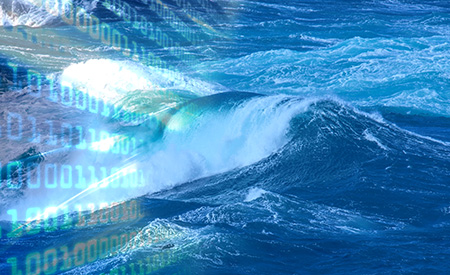/Documents/Report
Type of resources
Available actions
Topics
INSPIRE themes
Keywords
Contact for the resource
Provided by
Formats
status
-

The DTOceanPlus project has develop an open-source integrated suite of 2nd generation design tools for ocean energy technologies. The tools support the entire technology innovation and advancement process from concept, through development, to deployment, and is applicable at a range of levels: sub-system, device, and array. As one of the first tasks in the project, researchers at The University of Edinburgh conducted a consultation exercise, with the support of DTOceanPlus partners. This consultation addressed potential users and other key stakeholders for the DTOceanPlus tools, to identify and clarify their needs and requirements. A webinar was held initially, to introduce both the DTOceanPlus tools and the consultation. In addition to an online questionnaire, a series of individual interviews were held to obtain more nuanced input from key stakeholders. Opinions from over 70 industry professionals from a wide range of backgrounds were collated and analysed as part of the consultation. This includes representation of the four stakeholder categories identified: - Public funders, commercial investors, and insurance providers, - Innovators and developers, - Project developers, utilities, and supply chain, and - Policy makers, regulators, and standardisation bodies. Of the overall software characteristics considered, usability followed by flexibility & expandability then modularity were seen as most important. The proposed tools will need to deal with varying degrees of complexity, both at different stages in the project lifecycle and also for different user requirements. Several responses stressed the importance of linkages between the tools, and with external software. Nearly all respondents (>85%) indicated that they were likely or very likely to use DTOceanPlus at some stage in the project lifecycle. The results from the consultation exercise are presented in this report.
-

A coherent set of functional and technical requirements have been developed for the DTOceanPlus suite of design tools based on analysis of gaps between the current state-of-the-art tools, learning from the original DTOcean project, and the stakeholder expectations identified in the user consultation survey. The technical requirements in this document are translated from the general requirements for the overall suite of tools, and specific requirements (functional, operational, user, interfacing, and data) for the Structured Innovation design tool that has been developed as part of this project. These requirements relate to detailed technical requirements of the technology and environment, for the development, maintenance, support and execution of the software specifications to best meet the needs of the ocean energy industry.
-

A coherent set of requirements have been developed for the DTOceanPlus suite of design tools based on analysis of gaps between the current state-of-the-art tools, learning from the DTOcean project, and the stakeholder expectations identified in the user consultation exercise. The requirements in this document are split into general requirements for the overall suite of tools, and specific requirements (functional, operational, user, interfacing, and data) for each of the design tools that is developed as part of this, which are split by work package and task. They act as user specifications for the tool development work packages, and focus the development effort to best meet the needs of the ocean energy industry. Subsequent tasks of the DTOceanPlus project develop these requirements into more detailed technical requirements and software specifications, prior to software coding and integration, then testing and validation.
-

This report describes the methodology used to define the “validation scenarios”, accounting for the different potential use cases. Given the large number of permutations of tools, use cases, and the set of minimum validation requirements, the number of validation scenarios has been reduced to a number that can be run during the life of the DTOceanPlus project but that are sufficient to fully demonstrate the functionality of the DTOceanPlus suite of tools. The selection process, based on a successive approximation approach, has led to the cases that the potential users in the DTOceanPlus consortium have considered as the most relevant for the sector. In Section 4 of the document, the selected validation scenarios is described; the definition of these scenarios has been completed during the project to ensure that the most updated information is used.
 Metadata catalogue
Metadata catalogue